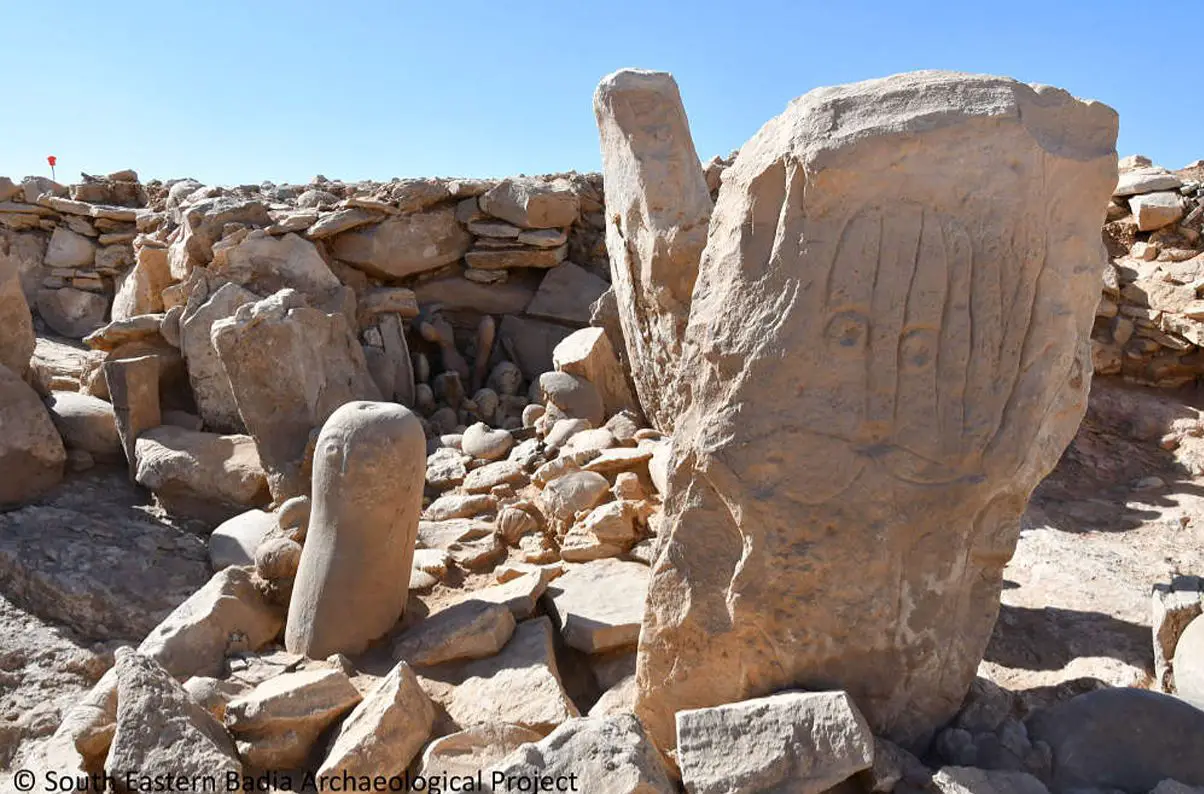Archaeologists excavating in the Jordanian desert have uncovered a Neolithic shrine dating from around 9,000-years-ago.
The discovery was made by a joint Jordanian-French team in the Badia region of the Khashabiyeh Mountains, revealing two standing stones that depict carved anthropomorphic figures and an altar and hearth.
On one of the standing stones is a depiction of a human figure, whilst on the other is a small-scale model of a “desert kite” type structure, commonly found in eastern Jordan, the Negev Desert of Israel, and the Sinai Desert of Egypt. Desert Kites were used for trapping game animals, consisting of long dry-stone walls converging on a neck, opening into a confined space used to slaughter prey.
Behind the stones is a structured deposit consisting of marine fossils, many of which have been arranged vertically or in specific orientations, in addition to a variety of smaller standing stones, animal figurines and worked flint objects.
According to the state-run Jordan News Agency, the shrine was a Neolithic campsite associated with nearby desert kites, used by the hunters for ceremonial offerings and animal sacrifices.
The researchers suggest that the shrine and desert kites were viewed by their builders as a centre of their cultural, economic, and even symbolic life in these marginal zones. As specialised hunters, they likely lived in semi-subterranean circular house, in contrast to the peoples of the neighbouring Fertile Crescent who survived largely by farming and herding.
Header Image Credit : SEBAP







